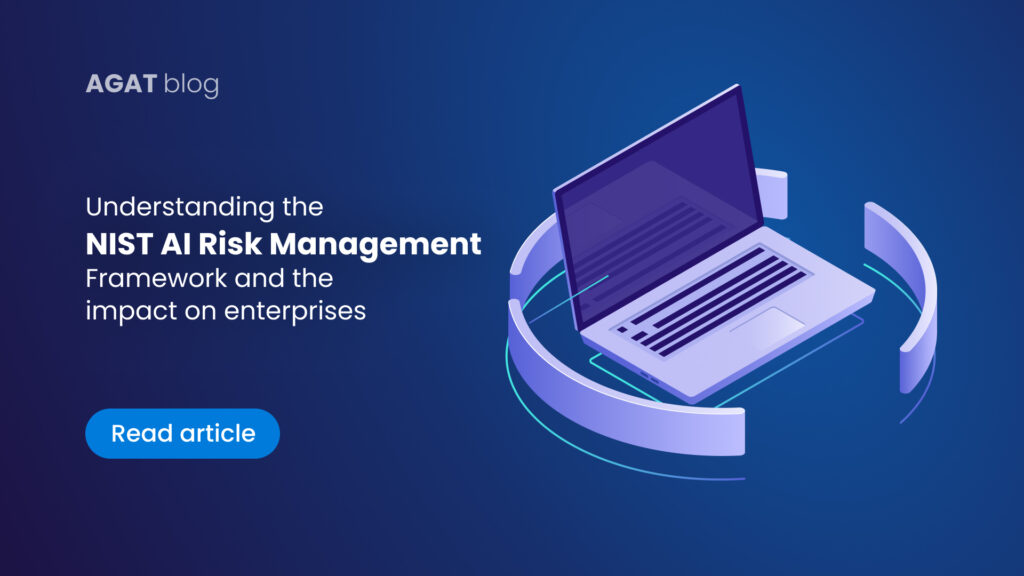
In the dynamic landscape of artificial intelligence, generative AI has ushered in groundbreaking capabilities, enabling machines to create content that mimics human-like text, images, and even code. While these advancements have opened doors to innovation and creativity, they've also uncovered a Pandora's box of security risks that demand our attention. In this blog, we'll investigate the details of these risks, from Prompt Injection to data exposure, and explore what solutions offer comprehensive governance and compliance in an era marked by generative AI.
Understanding the Risks:
Prompt Injection:
Prompt Injection involves manipulating the input given to generative models to produce unintended or malicious outputs. This could lead to the generation of deceptive content, misinformation, or even harmful code. For instance, injecting biased prompts into a language model could generate discriminatory or offensive text.
Jailbreaks:
Jailbreaks refer to unauthorized access or breaches into the security mechanisms of generative AI systems. Hackers exploit vulnerabilities to gain control over the underlying infrastructure, compromising the integrity and confidentiality of the generated content. Such breaches can have far-reaching consequences, from data theft to system manipulation.
DDoS (Distributed Denial of Service) and RCE (Remote Code Execution):
Generative AI systems are not immune to traditional cyber threats like DDoS attacks or RCE exploits. Attackers can leverage the computational resources of these systems to orchestrate large-scale DDoS attacks, disrupting services and causing financial losses. Moreover, vulnerabilities in the underlying infrastructure can be exploited to execute arbitrary code remotely, leading to system compromise and data breaches.
Data Exposure and Leaks:
Customer-facing applications leveraging Large Language Models (LLMs) are particularly at risk of data exposure and leaks. These applications interact with sensitive user data, and any compromise in the generative AI system could result in the inadvertent disclosure of confidential information. Whether it's personal conversations, financial data, or proprietary business information, the stakes are high in protecting user privacy and confidentiality.
Ensuring Governance and Compliance
In the face of these security challenges, businesses must adopt robust solutions that prioritize governance, compliance, and data security. On-premises/private cloud solutions offer a comprehensive approach to mitigating the risks associated with generative AI.
Data Sovereignty:
Organizations retain full control over their data, ensuring compliance with data sovereignty regulations and industry standards. By keeping sensitive information within their infrastructure, businesses minimize the risk of unauthorized access or data breaches.
Enhanced Security Measures:
Implementing stringent security measures to safeguard against external threats and insider attacks. From encryption protocols to access controls, every aspect of the system is fortified to withstand potential security breaches, providing peace of mind to organizations handling sensitive data.
Compliance Frameworks:
Facilitate adherence to regulatory frameworks and compliance standards, offering customizable policies and audit trails to monitor and track data usage. Whether it's GDPR, HIPAA, or industry-specific regulations, businesses can align their generative AI initiatives with legal and ethical guidelines, mitigating the risk of non-compliance penalties.
Continuous Monitoring and Updates:
Regular monitoring and updates are crucial in maintaining the security posture of generative AI systems. On-prem solutions provide proactive monitoring tools and timely software patches to address emerging threats and vulnerabilities, ensuring that the system remains resilient against evolving security risks.
Conclusion:
Generative AI holds immense potential to revolutionize industries and drive innovation, but its widespread adoption also brings forth significant security challenges. From prompt injection to data exposure, the risks associated with generative AI demand proactive measures to safeguard digital assets and preserve user trust. With solutions like BusinessGPT, organizations can navigate the complexities of generative AI with confidence, fostering a secure and compliant environment for innovation to thrive. As we venture into the future of AI, let's not overlook the imperative of securing the digital frontier.

















